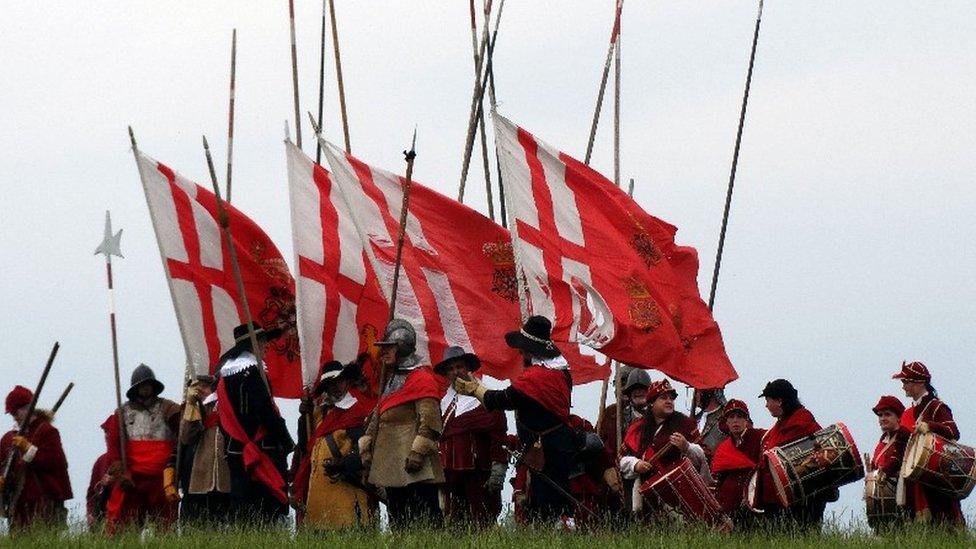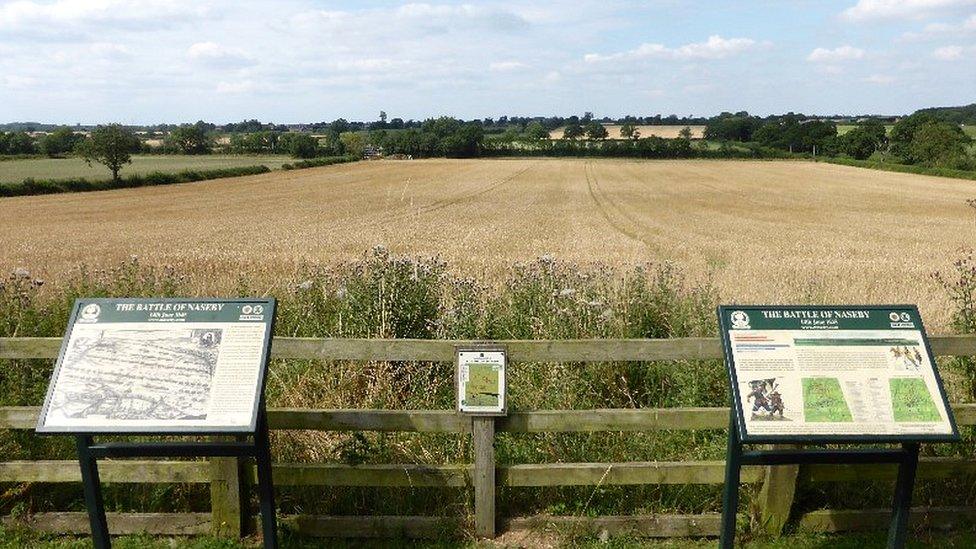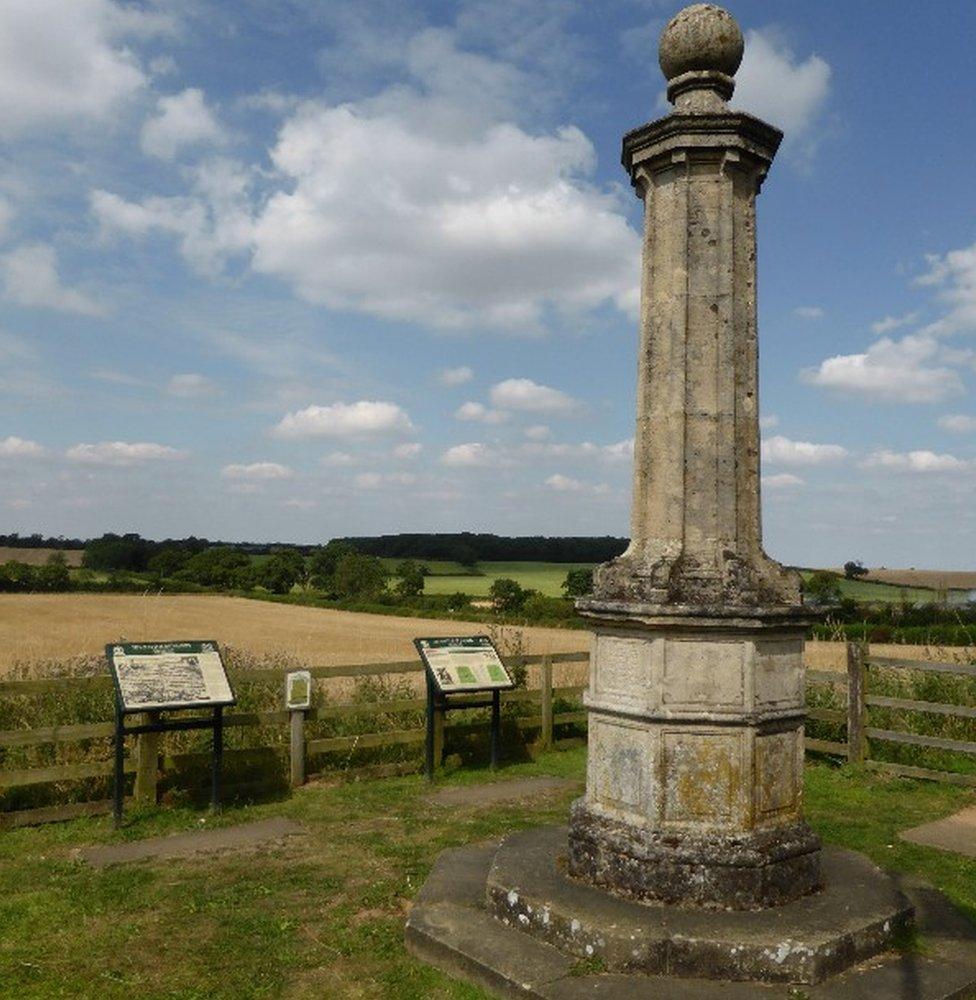Grant to prepare £1m Naseby visitor centre bid
- Published

The battle took place on 14 June 1645, when the army of Parliament destroyed the King's army in fields just outside the village of Naseby
A project to build a visitors' centre, costing more than £1m, for the site of one of most key battles in English history has won a lottery grant.
Naseby Battlefield Project (NBP) wants to build the centre at the Northamptonshire site of the decisive battle of the English Civil War.
The Heritage Lottery Fund (HLF) has given the group £9,900 to pay for a feasibility study and consultation.
NBP will then apply for a grant to build the centre.
The battle took place on 14 June 1645, when the army of parliament destroyed the King's army in fields just outside the village of Naseby.


Despite the addition of farm buildings and the enclosing of fields, the landscape remains intact and has not been built over
Battle of Naseby
Within a year of the battle, the war was over and it established parliament's right to a permanent role in the government of the kingdom
Naseby was also a victory for the 'new modelled' army - Britain's first regular, red-coated soldiers and is, for many, the birthplace of the British Army
Despite the addition of farm buildings and the enclosing of fields, the landscape remains intact and has not been built over

The NBP Trustees and Patrons want to create the Naseby Battlefield Visitor Centre as an information resource about the battle itself, the Civil War, the political and social history of the era, the rural environment in the 1600s and what life was like at the time.
NBP chairman Lord Arthur Hazelrigg, said: "We are thrilled to have received the support of the Heritage Lottery Fund to develop our plans for a visitor centre that will bring the Battle of Naseby to the national prominence it deserves.
Mike Ingram, project trustee, said the centre "would be somewhere to anchor the story and show artefacts of the battle".

The Cromwell Monument was built in the 1930s
- Published27 January 2015
.jpg)
- Published22 January 2015
.jpg)
- Published13 July 2013
.jpg)
- Published19 September 2012
.jpg)
- Published4 December 2012
.jpg)